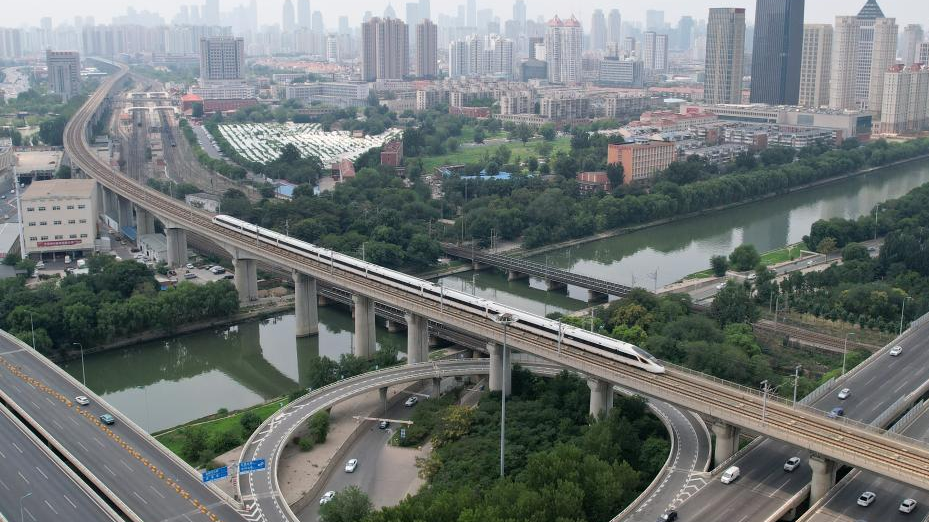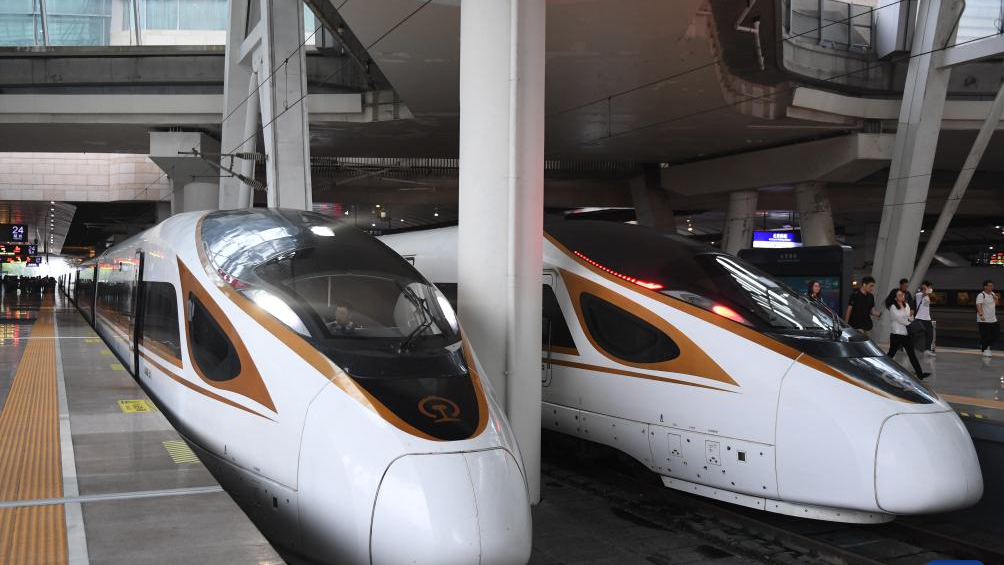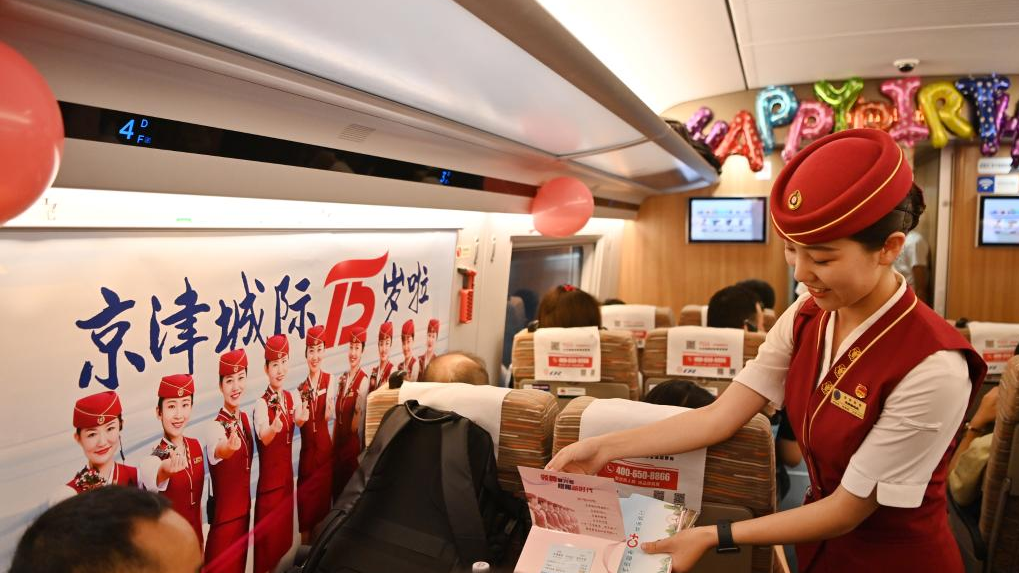
This aerial photo shows a train operating on the Beijing-Tianjin Intercity Railway in the urban area of north China's Tianjin Municipality, July 20, 2023. /Xinhua
This aerial photo shows a train operating on the Beijing-Tianjin Intercity Railway in the urban area of north China's Tianjin Municipality, July 20, 2023. /Xinhua
As the first high-speed railway (HSR) with a design speed of 350 kilometers per hour (km/h) in China, the Beijing-Tianjin Intercity Railway (BTIR) carried a total of 340 million passengers since it entered operation in 2008.
A train coded C2551 slowly pulled out of the Beijing South Railway Station and headed for Tianjin Binhai New Area on Tuesday, marking the 15th anniversary of BTIR's opening.
The operation of the BTIR in August 2008 gave strong support to the hosting of the Beijing 2008 Olympic Games, accelerating regional integration and development. It has also unveiled a fast-expanding modern HSR network in the populous China, coupled with its booming economy.

A train operating on the Beijing-Tianjin Intercity Railway (L) waits for passengers at the Beijing South Railway Station in Beijing, capital of China, August 1, 2023. /Xinhua
A train operating on the Beijing-Tianjin Intercity Railway (L) waits for passengers at the Beijing South Railway Station in Beijing, capital of China, August 1, 2023. /Xinhua
Over the past 15 years, the daily frequency of trains running on the rail line has increased from 47 pairs to 128 pairs, and the shortest departure interval has been shortened from 15 minutes to 3 minutes, according to data from the China Railway Beijing Group Co., Ltd.
Wang Manman, a resident from Tianjin's Wuqing District commutes to work in Beijing every day by the high-speed train. The quickest journey takes only about 20 minutes, and there are 11 trains for her to choose flexibly in the peak hours from 6 a.m. to 9 a.m.

A conductor presents a 15th-anniversary souvenir to a passenger aboard a train operating on the Beijing-Tianjin Intercity Railway, August 1, 2023. /Xinhua
A conductor presents a 15th-anniversary souvenir to a passenger aboard a train operating on the Beijing-Tianjin Intercity Railway, August 1, 2023. /Xinhua
By 2022, China had 42,000 kilemeters of operational HSR, ranking first in the world, and the length of HSR regularly operating at 350 km/h neared 3,200 kilemeters as of June 2022.
High-speed trains have changed people's commute circle and lifestyle and greatly optimized resource allocation, noted Cheng Shidong, a transport official with the National Development and Reform Commission.
(With input from Xinhua)